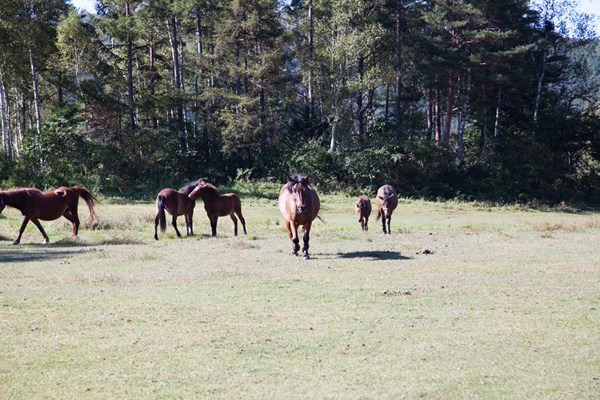 Credit: Thinkstock
Credit: ThinkstockDominance refers to an ordering between group?living animals, which dictates the priority of access to resources including food, water and shelter. Dominance behaviors have evolved as a means of conflict resolution in group-living animals and is an important strategy for grazing horses who rely on vigilance and flight as a means of avoiding predation.
The objective of this study, conducted in the United Kingdom, was to explore the association between dominance rank and body condition score (BCS) in outdoor group?living domestic horses.
Social interactions were recorded using a video camera during a feeding test, applied to 203 horses in 42 herds. Dominance rank was assigned to 194 individuals. Along with BSC, age and height were recorded and considered as potential confounders or behavior modifiers.
More dominant individuals generally had a higher BCS and this association was entirely independent of age and height. In addition, a greater proportion of dominant individuals fell into the obese category (BCS ? 7). There were more displacement encounters (defined as one horse moving towards another and the second individual moving away) and a greater level of interactivity in herds that had less variation in age and height, lending strength to the idea that physical variation may aid unity in group?living species. In addition there was a strong relationship between age and dominance rank, where middle?aged individuals were most likely to be dominant.
This research presents strong evidence that dominance status may be associated with BCS in domestic outdoor?living horses, and this association appears to be entirely independent of both age and height, both of which have been shown to be important determinants of dominance in horses in previous studies. These results are the first to link behavioral predictors to BCS in horses and should prompt the future consideration of behavioral and social factors when evaluating other factors in group?living animals.
For more information on this research, click here.
You can subscribe to the University of Minnesota horse newsletter here.


